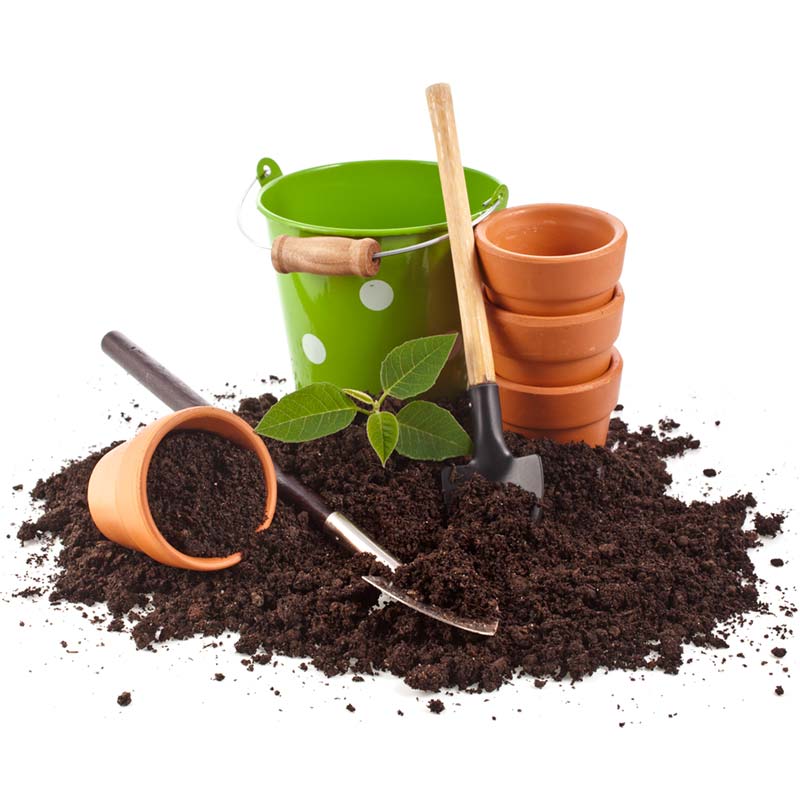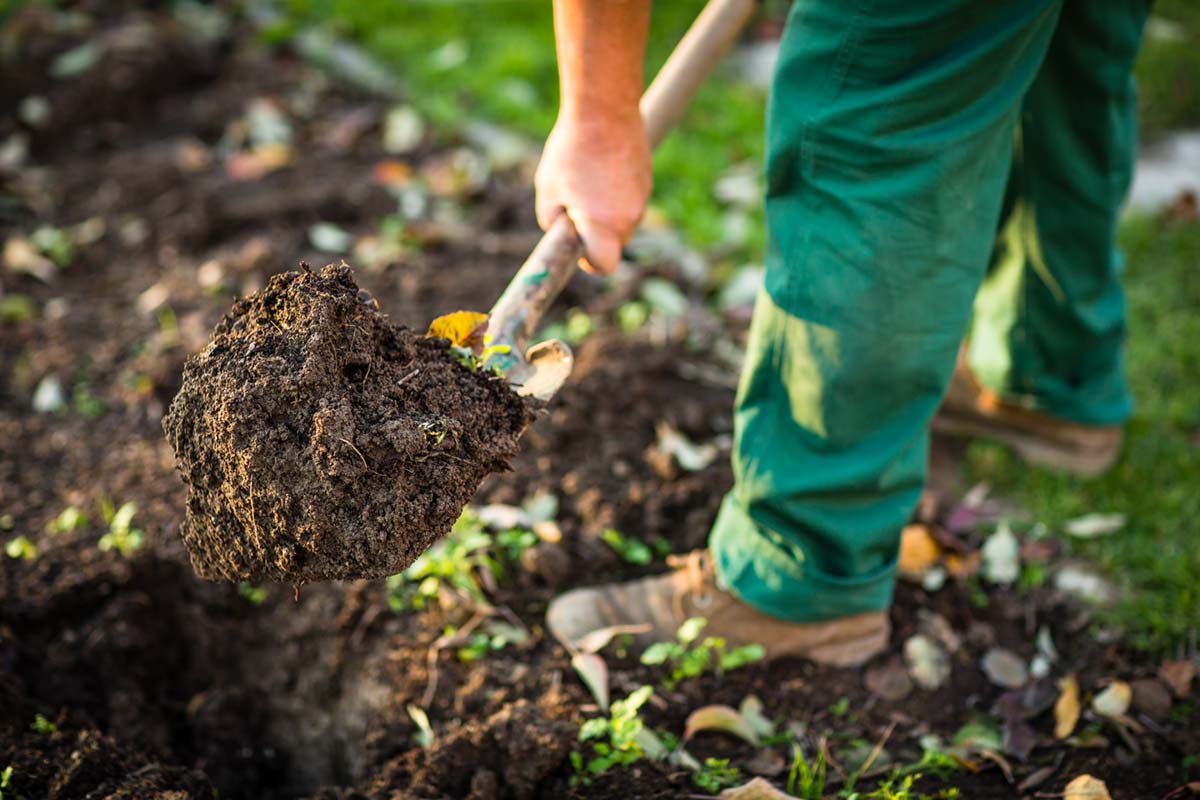When you’re thinking about planting in pots or raised beds, you’ll eventually wonder, “How much dirt do I need?”. There are some basic things to keep in mind.
For starters, you’ll need to measure the area of your garden, or at least count the pots or containers and know their sizes.
And it’s important that you get the right type of soil for the types of plants you’re growing.
How Much is a Yard of Dirt?
This one is pretty straight forward to answer. A yard of dirt is short for a cubic yard of dirt. And a cubic yard is 3 feet x 3 feet x 3 feet, or 9 cubic feet. It’s a lot of dirt!
So if you’re wondering, “How much topsoil do I need?”, then read on and we’ll give you some more details.

0.00 US Gallons needed
0.00 lbs needed.
How Much Topsoil Do I Need
You can use our calculator above, but it is really easy to do it yourself.
First measure the depth, length, and width of the area you want to fill with soil.
Let’s say you have planters that are 6 inches deep and 4 feet by 4 feet in size, you’ll need 4 x 4 x 0.5 = 8 cubic feet of soil. That’s nearly a cubic yard of soil!
Many gardeners use pots, and nursery pots sizes are a little weird. A four gallon nursery pot, is actually only 3 liquid gallons in volume! That’s because a nursery gallon is 3/4 of a liquid US gallon. It was really tricky for me to understand this for many years. So if you need to fill 20 five gallon nursery pots with soil, you’ll need 20 x 5 x 0.75 = 75 US gallons of soil. A US Gallon is only 0.134 cubic feet. So you’ll need 75 x 0.134 = 10 cubic feet of soil! That’s a little more than a cubic yard of soil!
Many times ordering soil is done by weight, so we just calculate that by multiplying the density of the soil, or the weight of a cubic yard by the total volume (in cubic yards) that you need. Our handy little calculator will do all that for you.
Like I mentioned above, it’s really important to consider the specific needs your plant’s have. Not all plants are the same. For example, cactus and tomatoes thrive in different types of soil.
We’ll go over texture and drainage so it will improve the chances of success in your garden.
How Much Soil You Need for Pots
A little known fact about nursery pots, the ones you buy for plants, is that a nursery gallon is equal to 3/4 of a US gallon! You read that right.
1 Nursery Gallon = 1 US Liquid Gallon
When you get a 5 gallon pot from your local nursery, it’s actually only 3.75 US gallons!!
This caused me a lot of headaches when I was learning about cultivation. I would end up with way too much soil or reservoirs that had way too much nutrients mixed in.
Yes, this little piece of information was especially frustrating for calculating the nutrients needed for a hydroponics reservoir…
For example, I had a 40 gallon reservoir by Botanicare. And I followed the directions from the nutrient label exactly, multiplying their instructions for 40 gallons of water!
Makes sense, right? Well, I was wrong.
In reality that 40 gallon reservoir only holds 30 US liquid gallons, to the brim.
Blindly following the directions, I mixed up a nutrient solution that was 33% higher than the nutrient company was intending for my plants, and it literally fried the plants!
Learn from my mistake… Now you know a “nursery gallon” (reservoirs included) equals 0.75 US gallons.
Here’s a little nursery pot and container soil calculator to help you calculate what you need.
0.00 US Gallons needed
Soil-Related Factors for Efficient Cultivations
Some plants do best in a specific type of soil, and it usually has to do with the amount of oxygen the roots need and the amount of nutrients available.
Fast draining soil provides more oxygen to the roots, which can be great, but can also require more frequent irrigation.
Soils that hold onto more moisture often have finer particles, and that means more nutrient availability for the plant. But the species needs to be able to handle sitting in moist soil for longer periods. We wouldn’t expect cactus to perform well in this type of soil.
So your soil should have a specific texture that provides this to the plant.
Soil Texture
The texture of a soil is related to the particles that it is made of. This is one of the most important factors to consider when it comes to buying the specific nutrients your garden will require.
The size of the particles contained in the soil to be used for your garden determine how well water will drain, which is vital for plants.
Choose Your Soil Type
There are generally three main types of garden soil, sandy, silty, and clay soil. There is also a fourth type that is simply a combination of the first three called loam. And it has characteristics that make it ideal for gardens. But if your garden is dominant in one type of soil, you can improve it by adding another.
According to texture and plants chosen, you will have a clear idea about what to buy when it comes to making the right mixture that will make up your garden soil, including nutrients, and you could choose between organic vs conventional nutrients. Being aware of the texture of your garden will also help you plan out your watering system and climate control.
Sandy Soil
Soil that is sandy is mainly composed of sand, broken down pieces of stones. Even gravel is a type of sandy soil. You’ll find this along stream beds and by the beach. Anywhere that rocks are being worn down into smaller pieces. Sand soil does not provide or retain nutrients well. Sandy soils generally have a neutral pH.
Silt Soil
Silt soil is composed of much smaller particles than sandy soil. It’s composed of broken down rocks and other particles, in between the size of sand and clay particles. Silt holds water much better than sand because of the fine, smooth, characteristics of the soil. Silt soil is the most fertile type of soil, compared to the other three types. It’s used in cultivation to enhance soil fertility.
Clay Soil
Soil that is considered clay is mainly composed of the smallest particles. The little particles get so tightly compacted that there is practically no air. Clay soil can hold onto water really well, but this also means the drainage is rather poor. Clay is extremely dense and heavy, and many types of plants struggle to to grow well in it.
Loamy Soil
What we call loam is the fourth and final type of soil. Basically, it’s composed of sand, silt, and clay in a balance that the benefits from each are available. It’s also called “Agricultural Soil” because it provides a balance of the other three types of soils. It is also very good to use for farming.
